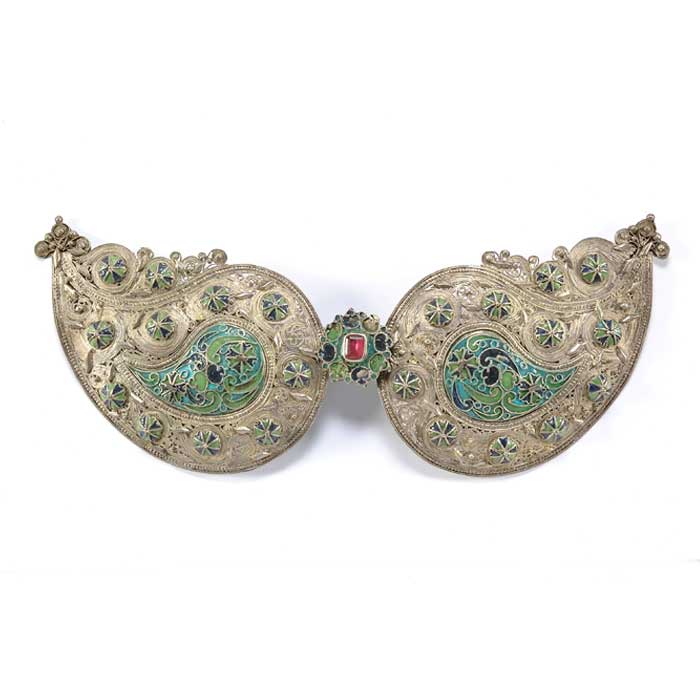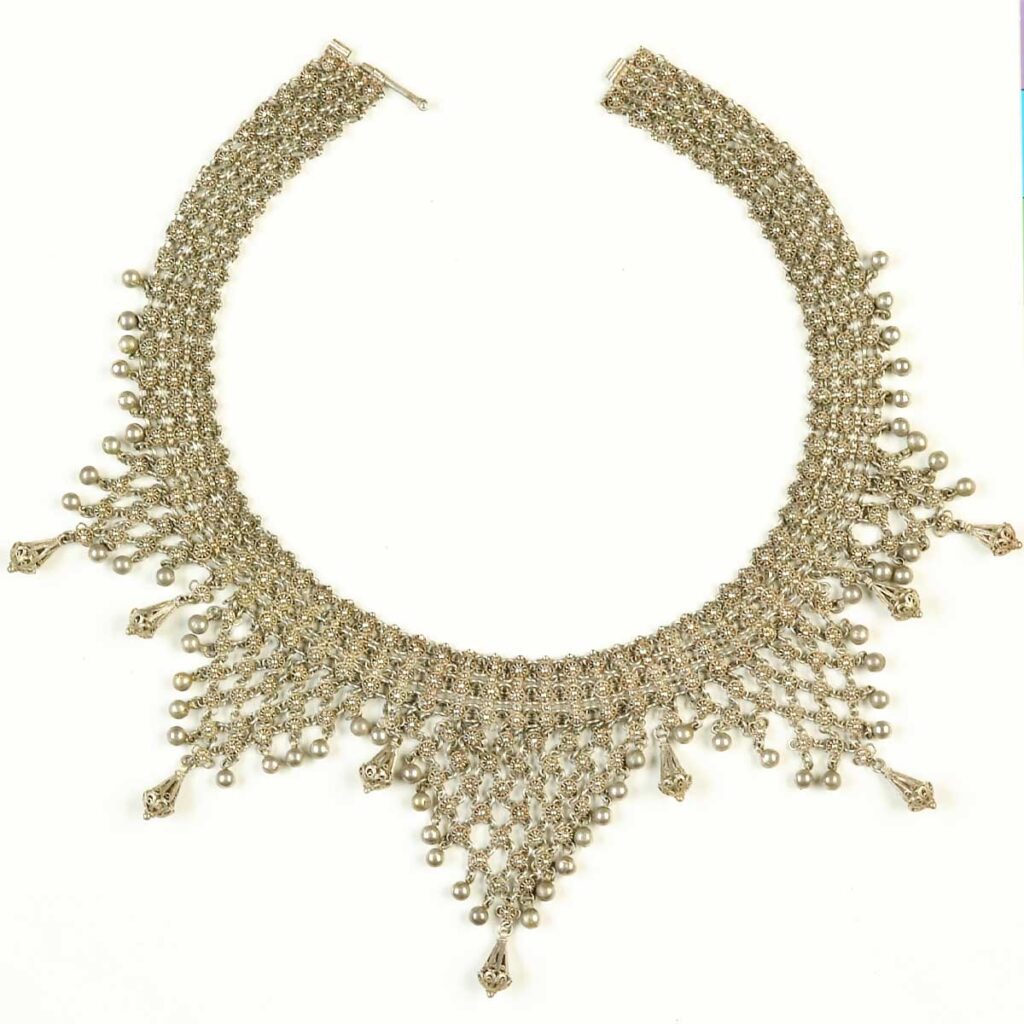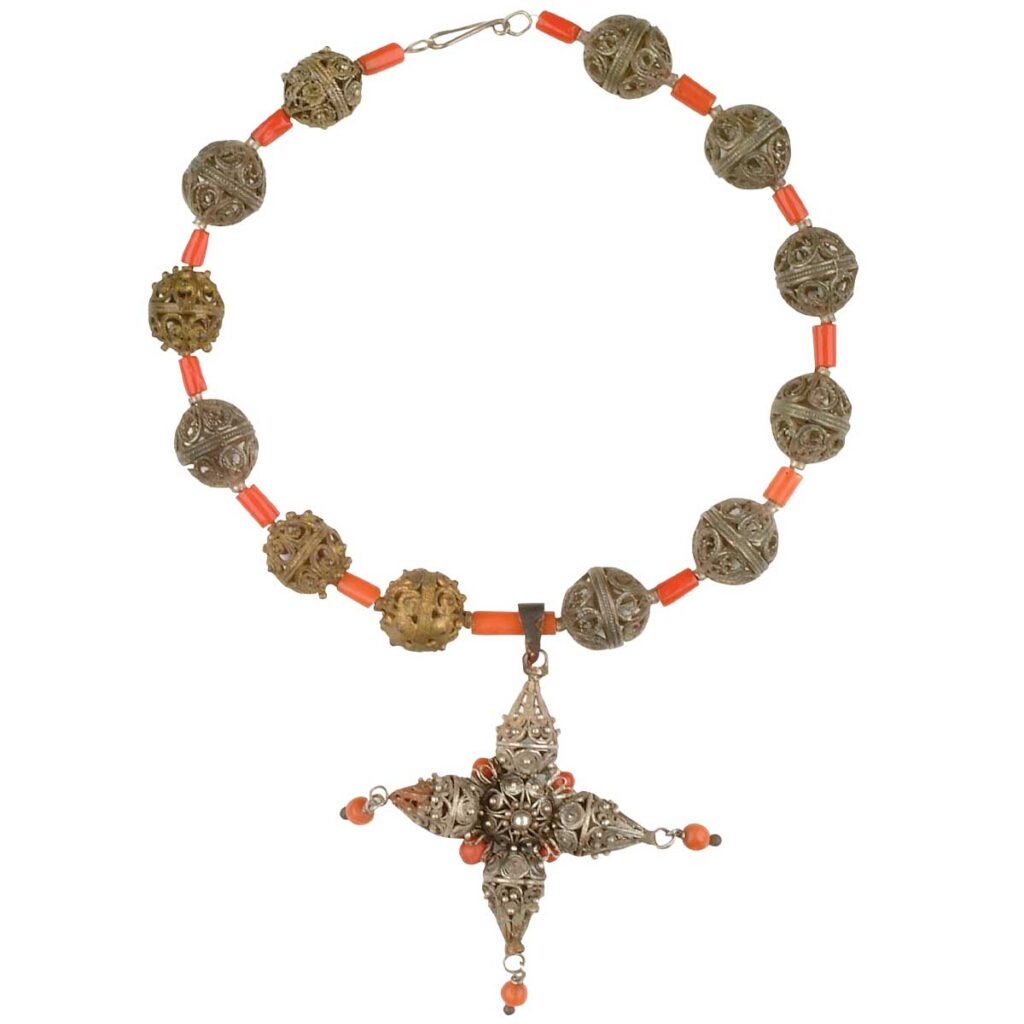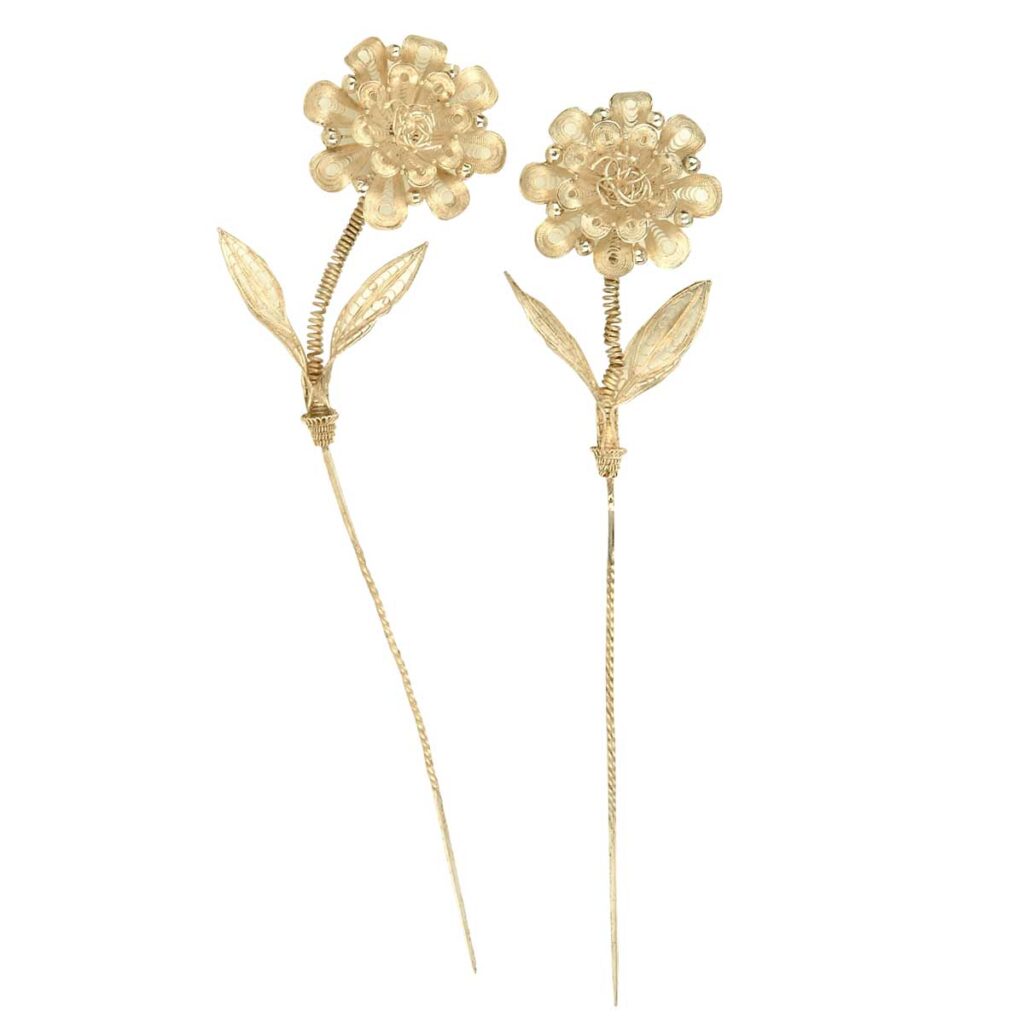Jewellery Collection
During the period of Ottoman rule, Nicosia was the largest centre of Cypriot gold- and silversmithing.
The gold- and silversmiths of Nicosia had their workshops and shops in the capital city, though they travelled across the entire island to sell their products, chiefly at fairs held in villages and monasteries on the most important religious feast days.
Most of the items were made of an alloy of gold and silver. Jewellery made entirely of gold was rare and was reserved for the wealthier upper classes. The lower classes mostly wore ornaments made of silver and copper or silver-plated copper and tin.
The techniques and decorative motifs employed by Cypriot gold- and silversmiths maintained elements of earlier times, mostly of the Byzantine and Post-Byzantine periods, and were influenced by jewellery made in Greece and the Middle East. Earrings, bracelets and rings were the most common pieces of jewellery. Apart from those, several other accessories complemented the adornment and attire of women. Among them were the spligges, which were pins used for fastening and decorating headbands, various neck ornaments, such as the kertanedes and scaletes, the myrmidi and crosses with doudounia filigree work, as well as a great array of belts and buckles embellishing the waist. Men wore silver rings with gemstones and had hanging ornaments and chains fixed to their belts.
Nicosia remained the main area for the manufacture of jewellery well into modern times.

